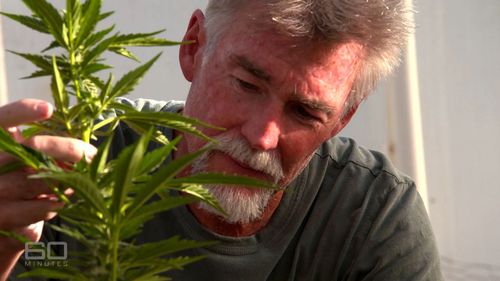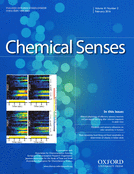 “Though known as a medicinal herb for centuries, the recent legalization of cannabinoids across many states has ushered in a new era where cannabinoids have become a popular treatment option amongst clinicians and patients alike. Cannabinoids have demonstrated efficacy in wound healing, reducing inflammation, ameliorating pain, and have shown potential as an anti-tumor agent. As a result, cannabinoids have been rapidly woven into the fabric of modern medicine. However, the utility of cannabinoids in dermatologic surgery has not been explored to date. In this paper, we review the current literature to discuss the potential impact of cannabinoid use in dermatologic surgery.”
“Though known as a medicinal herb for centuries, the recent legalization of cannabinoids across many states has ushered in a new era where cannabinoids have become a popular treatment option amongst clinicians and patients alike. Cannabinoids have demonstrated efficacy in wound healing, reducing inflammation, ameliorating pain, and have shown potential as an anti-tumor agent. As a result, cannabinoids have been rapidly woven into the fabric of modern medicine. However, the utility of cannabinoids in dermatologic surgery has not been explored to date. In this paper, we review the current literature to discuss the potential impact of cannabinoid use in dermatologic surgery.”
Tag Archives: herb
In vivo and in vitro anti-inflammatory activity evaluation of Lebanese Cannabis sativa L. ssp. indica (Lam.)
 “Cannabis sativa L. is an aromatic annual herb belonging to the family Cannabaceae and it is widely distributed worldwide. Cultivation, selling, and consumption of cannabis and cannabis related products, regardless of its use, was prohibited in Lebanon until April 22, 2020. Nevertheless, cannabis oil has been traditionally used unlawfully for many years in Lebanon to treat diseases such as arthritis, diabetes, cancer and few neurological disorders.
“Cannabis sativa L. is an aromatic annual herb belonging to the family Cannabaceae and it is widely distributed worldwide. Cultivation, selling, and consumption of cannabis and cannabis related products, regardless of its use, was prohibited in Lebanon until April 22, 2020. Nevertheless, cannabis oil has been traditionally used unlawfully for many years in Lebanon to treat diseases such as arthritis, diabetes, cancer and few neurological disorders.
Aim of the study: The present study aims to evaluate the phytochemical and anti-inflammatory properties of a cannabis oil preparation that is analogous to the illegally used cannabis oil in Lebanon.
Results: Chemical analysis of COE revealed that cannabidiol (CBD; 59.1%) and tetrahydrocannabinol (THC; 20.2%) were found to be the most abundant cannabinoids.Various monoterpenes (α-Pinene, Camphene, β-Myrecene and D-Limonene) and sesquiterpenes (β-Caryophyllene, α-Bergamotene, α-Humelene, Humulene epoxide II, and Caryophyllene oxide) were identified in the extract. Results showed that COE markedly suppressed the release of TNF-α in LPS-stimulated rat monocytes. Western blot analysis revealed that COE significantly inhibited LPS-induced COX-2 and i-NOS protein expressions and blocked the phosphorylation of MAPKs, specifically that of extracellular signal-regulated kinase (ERK), c-Jun NH2-terminal kinase (JNK) and p38 MAPK. COE displayed a significant inhibition of paw edema in both rat models. Histopathological examination revealed that COE reduced inflammation and edema in chronic paw edema model.
Conclusion: The current findings demonstrate that COE possesses remarkable in vivo and in vitro anti-inflammatory activities which support the traditional use of the Lebanese cannabis oil extract in the treatment of various inflammatory diseases including arthritis.”
https://pubmed.ncbi.nlm.nih.gov/33359187/
https://www.sciencedirect.com/science/article/abs/pii/S037887412033631X?via%3Dihub

Exploiting cannabinoid and vanilloid mechanisms for epilepsy treatment.
 “This review focuses on the possible roles of phytocannabinoids, synthetic cannabinoids, endocannabinoids, and “transient receptor potential cation channel, subfamily V, member 1” (TRPV1) channel blockers in epilepsy treatment.
“This review focuses on the possible roles of phytocannabinoids, synthetic cannabinoids, endocannabinoids, and “transient receptor potential cation channel, subfamily V, member 1” (TRPV1) channel blockers in epilepsy treatment.
The phytocannabinoids are compounds produced by the herb Cannabis sativa, from which Δ9-tetrahydrocannabinol (Δ9-THC) is the main active compound. The therapeutic applications of Δ9-THC are limited, whereas cannabidiol (CBD), another phytocannabinoid, induces antiepileptic effects in experimental animals and in patients with refractory epilepsies.
Synthetic CB1 agonists induce mixed effects, which hamper their therapeutic applications. A more promising strategy focuses on compounds that increase the brain levels of anandamide, an endocannabinoid produced on-demand to counteract hyperexcitability. Thus, anandamide hydrolysis inhibitors might represent a future class of antiepileptic drugs. Finally, compounds that block the TRPV1 (“vanilloid”) channel, a possible anandamide target in the brain, have also been investigated.
In conclusion, the therapeutic use of phytocannabinoids (CBD) is already in practice, although its mechanisms of action remain unclear. Endocannabinoid and TRPV1 mechanisms warrant further basic studies to support their potential clinical applications.”
https://www.ncbi.nlm.nih.gov/pubmed/31839498
“Cannabidiol is in clinical use for refractory epilepsies.”
https://www.epilepsybehavior.com/article/S1525-5050(19)30373-7/fulltext
Olivia Newton John says medicinal cannabis is key to her cancer recovery


“Olivia Newton-John: ‘Medicinal cannabis enhanced my quality of life’. For this special 60 Minutes report, Olivia Newton-John tells Liz Hayes that despite her latest diagnosis she was “getting strong again” and that her quality of life had been greatly enhanced by medicinal cannabis, grown for her by her husband John. Olivia and John are strong believers in the power of plants particularly cannabis. “I really believe the cannabis has made a huge difference,” says Olivia. “I’m confident,” John concurs. Olivia, John and Chloe are now cannabis converts, and now want medicinal cannabis legalised as an alternative treatment in Australia.” https://www.9news.com.au/national/olivia-newton-john-60-minutes-medical-cannabis-advocate-after-cancer-treatment-news/da315271-7387-47e0-a14e-c7fbb9a4b18b
“I have to credit again my wonderful husband because he gives me Cannabis oil that he makes for me, grows the plants here. We’re so lucky in California that we can grow our own, and so he’s made me these incredible tinctures that help with my pain and with sleep, and everything.” https://www.today.com/
Cannabinoids, Chemical Senses, and Regulation of Feeding Behavior.

“The herb Cannabis sativa has been traditionally used in many cultures and all over the world for thousands of years as medicine and recreation.
However, because it was brought to the Western world in the late 19th century, its use has been a source of controversy with respect to its physiological effects as well as the generation of specific behaviors. In this regard, the CB1 receptor represents the most relevant target molecule of cannabinoid components on nervous system and whole-body energy homeostasis.
Thus, the promotion of CB1 signaling can increase appetite and stimulate feeding, whereas blockade of CB1 suppresses hunger and induces hypophagia.
Taste and flavor are sensory experiences involving the oral perception of food-derived chemicals and drive a primal sense of acceptable or unacceptable for what is sampled. Therefore, research within the last decades focused on deciphering the effect of cannabinoids on the chemical senses involved in food perception and consequently in the pattern of feeding.
In this review, we summarize the data on the effect of cannabinoids on chemical senses and their influences on food intake control and feeding behavior.”
Cannabis and the Anxiety of Fragmentation-A Systems Approach for Finding an Anxiolytic Cannabis Chemotype.

“Cannabis sativa is a medicinal herb with a diverse range of chemotypes that can exert both anxiolytic and anxiogenic effects on humans. Medical cannabis patients receiving organically grown cannabis from a single source were surveyed about the effectiveness of cannabis for treating anxiety.
Patients rated cannabis as highly effective overall for treating anxiety with an average score of 8.03 on a Likert scale of 0 to 10 (0 = not effective, 10 = extremely effective).
Patients also identified which strains they found the most or least effective for relieving their symptoms of anxiety. To find correlations between anxiolytic activity and chemotype, the top four strains voted most and least effective were analyzed by HPLC-MS/MS to quantify cannabinoids and GC-MS to quantify terpenes. Tetrahydrocannabinol (THC) and trans-nerolidol have statistically significant correlations with increased anxiolytic activity.
Guiaol, eucalyptol, γ-terpinene, α-phellandrene, 3-carene, and sabinene hydrate all have significant correlations with decreased anxiolytic activity. Further studies are needed to better elucidate the entourage effects that contribute to the anxiolytic properties of cannabis varieties.”
https://www.ncbi.nlm.nih.gov/pubmed/30405331
https://www.frontiersin.org/articles/10.3389/fnins.2018.00730/full
Cannabinoids for treating inflammatory bowel diseases: where are we and where do we go?

“Fifty years after the discovery of Δ9-tetrahydrocannabinol (THC) as the psychoactive component of Cannabis, we are assessing the possibility of translating this herb into clinical treatment of inflammatory bowel diseases (IBDs).
Here, a discussion on the problems associated with a potential treatment is given.
From first surveys and small clinical studies in patients with IBD we have learned that Cannabis is frequently used to alleviate diarrhea, abdominal pain, and loss of appetite.
Single ingredients from Cannabis, such as THC and cannabidiol, commonly described as cannabinoids, are responsible for these effects. Synthetic cannabinoid receptor agonists are also termed cannabinoids, some of which, like dronabinol and nabilone, are already available with a narcotic prescription.
Recent data on the effects of Cannabis/cannabinoids in experimental models of IBD and in clinical trials with IBD patients have been reviewed using a PubMed database search. A short background on the endocannabinoid system is also provided.
Expert commentary: Cannabinoids could be helpful for certain symptoms of IBD, but there is still a lack of clinical studies to prove efficacy, tolerability and safety of cannabinoid-based medication for IBD patients, leaving medical professionals without evidence and guidelines.”
Cannabis sativa and the endogenous cannabinoid system: therapeutic potential for appetite regulation.

“The herb Cannabis sativa (C. sativa) has been used in China and on the Indian subcontinent for thousands of years as a medicine.
However, since it was brought to the UK and then the rest of the western world in the late 19th century, its use has been a source of controversy. Indeed, its psychotropic side effects are well reported but only relatively recently has scientific endeavour begun to find valuable uses for either the whole plant or its individual components.
Here, we discuss evidence describing the endocannabinoid system, its endogenous and exogenous ligands and their varied effects on feeding cycles and meal patterns.
Furthermore we also critically consider the mounting evidence which suggests non-Δ(9) tetrahydrocannabinol phytocannabinoids play a vital role in C. sativa-induced feeding pattern changes.
Indeed, given the wide range of phytocannabinoids present in C. sativa and their equally wide range of intra-, inter- and extra-cellular mechanisms of action, we demonstrate that non-Δ(9) tetrahydrocannabinol phytocannabinoids retain an important and, as yet, untapped clinical potential.”
Can Cannabinoids Modulate Fibrotic Progression in Systemic Sclerosis?
“Since ancient times, plants have been used for therapeutic purposes.
Cannabis sativa has been widely used as a medicinal herb by Ayurveda and traditional Chinese medicine for centuries.
According to our in vitro and in vivo experimental models, cannabinoids are able to modulate fibrosis.
The exact mechanism underlying this effect requires further investigation, but it seems to go beyond their anti-inflammatory and immunomodulatory properties.
Based on the above observations, we aimed to investigate the role of cannabinoids in systemic sclerosis (SSc), an autoimmune disease characterized by diffuse fibrosis.
Since preclinical data on cannabinoids show their capability to modulate fibrosis, inflammation and vasodilatation, these molecules could be ideal drugs for targeting SSc.”
Endocannabinoid Regulation of Neuroendocrine Systems.
“The hypothalamus is a part of the brain that is critical for sustaining life through its homeostatic control and integrative regulation of the autonomic nervous system and neuroendocrine systems. Neuroendocrine function in mammals is mediated mainly through the control of pituitary hormone secretion by diverse neuroendocrine cell groups in the hypothalamus.
Cannabinoid receptors are expressed throughout the hypothalamus, and endocannabinoids have been found to exert pronounced regulatory effects on neuroendocrine function via modulation of the outputs of several neuroendocrine systems.
Here, we review the physiological regulation of neuroendocrine function by endocannabinoids, focusing on the role of endocannabinoids in the neuroendocrine regulation of the stress response, food intake, fluid homeostasis, and reproductive function.
Cannabis sativa (marijuana) has a long history of recreational and/or medicinal use dating back to ancient times. It was used as an analgesic, anesthetic, and antianxiety herb as early as 2600 B.C.
The hedonic, anxiolytic, and mood-elevating properties of cannabis have also been cited in ancient records from different cultures. However, it was not until 1964 that the psychoactive constituent of cannabis, Δ(9)-tetrahydrocannabinol, was isolated and its chemical structure determined (Gaoni & Mechoulam, 1964).”
